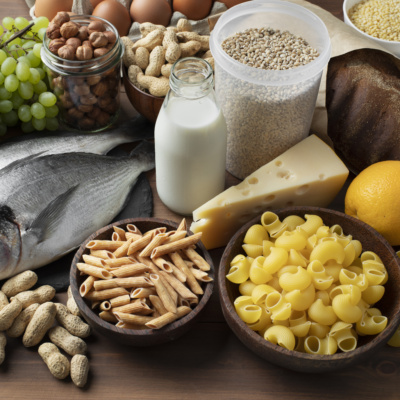top of mind news
- Survey Reveals What Restaurants are Doing to Survive
- Three Fresh Tips for Leveraging PR to Grow
- Los Angeles County Shuts Down Outdoor Dining As COVID-19 Cases Surge
- Here’s What Business Owners Should Know About PPP Loan Deductibility During Tax Season
- Running List of States Reshutting Dine-In Service Due to COVID-19 Spikes
Poultry
 Chicken slaughter for the week ending November 14th continued to fade, but bird weights were up slightly leaving ready-to-cook (RTC) output near even with last year. Still, RTC production is down 2.4% over the past six-weeks and continues to support prices. The wing markets have shown little sign of fading, holding in the $2.20s while the tender markets have been atypically firm, as well. While breast meat prices are below year ago levels, tighter availabilities could support prices into the late year. Anticipate inflated tender and wing pricing to persist so long as production remains lackluster, and indications are that integrators are in no rush to increase output anytime soon.
Chicken slaughter for the week ending November 14th continued to fade, but bird weights were up slightly leaving ready-to-cook (RTC) output near even with last year. Still, RTC production is down 2.4% over the past six-weeks and continues to support prices. The wing markets have shown little sign of fading, holding in the $2.20s while the tender markets have been atypically firm, as well. While breast meat prices are below year ago levels, tighter availabilities could support prices into the late year. Anticipate inflated tender and wing pricing to persist so long as production remains lackluster, and indications are that integrators are in no rush to increase output anytime soon.
Beef
Last week’s cattle harvest was an aggressive one, with 665k head moving through packing plants. Heavier carcasses propped up beef output, leaving production up 1% from last year. Despite larger production, the USDA beef cutouts continued to rise with the Choice rib primal contributing the most. Still, eventual lower rib prices should reemerge, but seasonally, the end meats and grinds usually make another move higher into early next year. Fat trim prices remain attractive, but carcass weights should be back on the decline so anticipate some price support to emerge across the beef 50s moving forward from here.
Pork
Hog harvests moved back over the 2.7 million head mark last week, but pork production was modestly below year ago levels. The USDA cutout has declined abruptly, and spot pork purchases have accelerated in kind. This is likely to support prices modestly, so sharp declines are not likely going forward. Bellies have been a loss leader of the hog carcass, breaking below a $1.00/lb. heading into late month. And contracting near these price levels has generally been favorable especially when seasonal increases for bellies typically emerge into mid-December.
THE SEA
Seafood
The salmon markets have mostly trended well below year ago levels during the fall due in a large part to lackluster foodservice demand brought on by COVID. This is also fueling strong exports to the U.S. During September, the U.S. imported 5.8% more salmon than the previous year. Farmed Atlantic salmon filet imports were better by nearly 12% (y/y). Fairly solid imports are anticipated to persist which should temper any notable upside potential in salmon prices.
THE GARDEN
Produce
The chief lettuce harvest area continues to transition to the Yuma/Imperial Valley region with a general gap in supplies due to adverse weather. Iceberg lettuce shipments in recent weeks have been tracking 18% below the prior year as of late as a result. This is supporting the lettuce markets. Better lettuce supplies are anticipated in the coming weeks which could influence the markets lower. The five-year average move for the iceberg lettuce markets during December is a decline of 55%. Tomato supplies are subpar as well.
THE KITCHEN SINK
Dairy
CME cheese block and barrel prices have fallen sharply since last week. CME spot butter prices remain historically deflated. Per the USDA, U.S. October milk production was up 2.3% (y/y). The number of milk cows in October was up .5% (y/y) and was 14k head larger than the prior month. The milk-per-cow yield in the month was up 1.5% (y/y). Anticipate strong milk output this winter. Still, cheese prices may find some support soon. Abundant cream supplies are boosting butter supplies. Tempered holiday baking and struggling fine dining may remain a headwind for seasonally higher butter prices this fall.
Grains
The food oil markets continue to firm due to limited world supplies. The U.S. spot soybean oil market is trading at its most expensive level in six years. With ongoing concerns with the South American corn and soybean crops, food oil prices could remain well supported throughout the fall.
Oil
Last week the national average retail diesel fuel price was the costliest in nine weeks. With mixed regional economic activity both globally and domestic, diesel fuel prices will likely be erratic. But a near term correction lower may occur.













